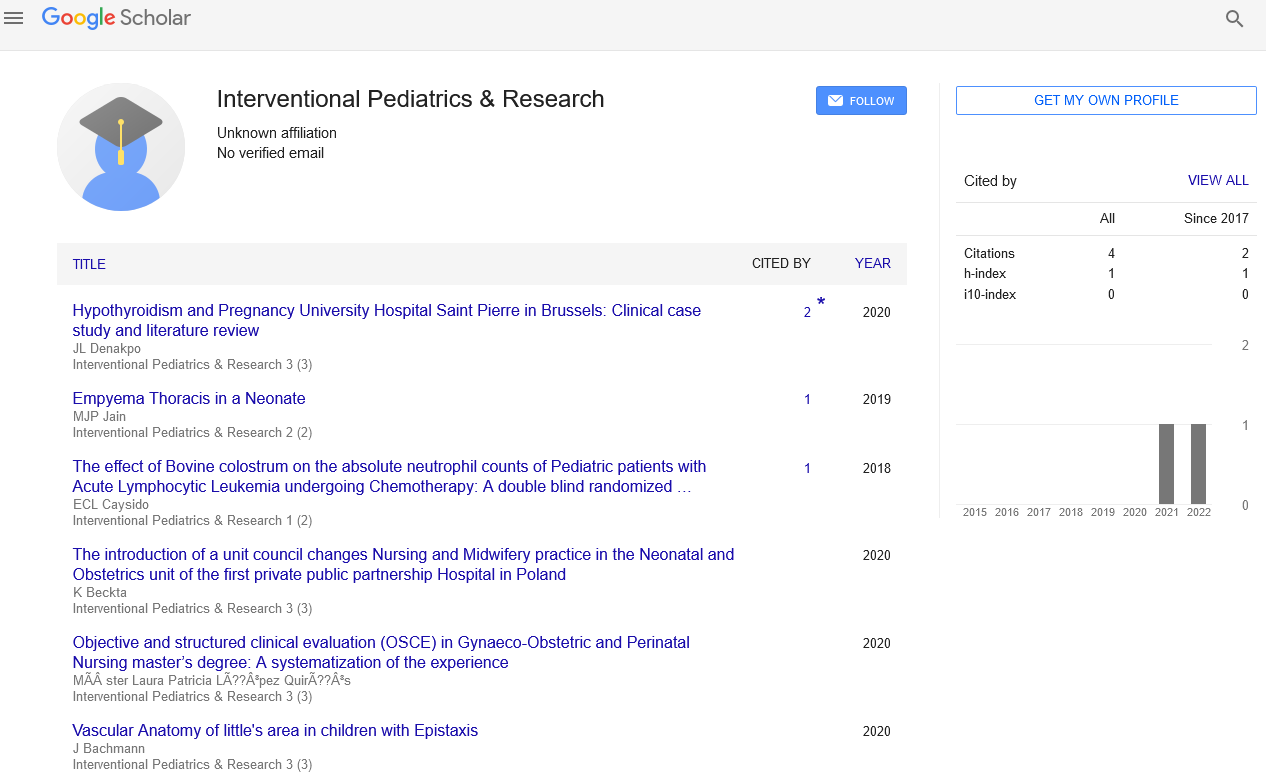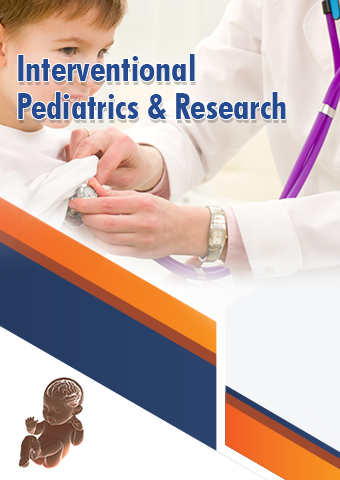Mini Review - Interventional Pediatrics & Research (2023) Volume 6, Issue 1
Inflammatory cardiomyopathy and myocarditis: current evidence and plans for the future
Richter Dennert*
Department of inflammatory cardiomyopathy, Egypt
Department of inflammatory cardiomyopathy, Egypt
E-mail: dennert_r8@gmail.com
Received: 30-Jan-2023, Manuscript No. ipdr-23-88262; Editor assigned: 01-Feb-2023, Pre-QC No. ipdr-23- 88262(PQ); Reviewed: 15-Feb-2023, QC No. ipdr-23-88262; Revised: 17- Feb-2023, Manuscript No. ipdr-23- 88262(R); Published: 24-Feb-2023, DOI: 10.37532/ipdr.2023.6(1).07-09
Abstract
Inflammatory cardiomyopathy is mostly caused by viruses, but it can also be caused by infections caused by bacteria, protozoa, or fungal organisms, a wide range of drugs and toxic substances, and systemic immune-mediated diseases. A poor prognosis is associated with inflammatory cardiomyopathy that is complicated by left ventricular dysfunction, heart failure, or arrhythmia, despite extensive research. It is currently unknown why some patients recover without any residual damage to their myocardium while others develop dilated cardiomyopathy. It is still up for debate to determine which viruses are active inducers and which are merely bystanders in disease progression and healing, as well as the relative roles of the pathogen, host genomics, and environmental factors. Consequently, there is a lack of well-established treatment options. With a special focus on virus-induced and virus-associated myocarditis, we summarize and evaluate the evidence on the pathogenesis, diagnosis, and treatment of myocarditis and inflammatory cardiomyopathy in this Review. In addition, we identify knowledge gaps, evaluate the experimental models that are available, and suggest future directions for the field. The cardiovascular effects of severe acute respiratory syndrome coronavirus infection are also discussed, along with any unanswered questions.
Keywords
Inflammation • Cardiomyopathies • Infectious diseases • SARS-CoV-2
Introduction
When complicated by left ventricular dysfunction, heart failure, or arrhythmia, inflammatory cardiomyopathy still has a poor prognosis despite extensive research and improved diagnosis and understanding of the pathogenesis [1]. Furthermore, one of the main causes of cardiogenic shock in young adults is fulminant myocarditis, a rare, sudden, and severe form of cardiac inflammation. In order to reduce these patients’ mortality and the need for heart transplants, prompt diagnosis and specific treatment strategies are required. The pathogenesis of inflammatory cardiomyopathy and the roles of the viral infection, the immune system, the host’s genetic background, and the environment in disease progression and prognosis are still the subject of numerous unanswered questions [2]. These knowledge gaps highlight the need for advanced experimental systems that can better model the human immune system. They also highlight the need to improve the characterization and classification of patients, such as through the use of photomapping and phonemics, which involve in-depth evaluations of immune status, viral presence, and/or other biomarkers. We assess the available animal and cell models of myocarditis and inflammatory cardiomyopathy, evaluate the gaps in our understanding of their pathogenesis, diagnosis, treatment, and prognosis, and suggest future directions for the field in this review. We talk about whether viruses are active agents that cause myocarditis and inflammatory cardiomyopathy or just potential bystanders [3]. For the purpose of diagnosing, directing therapeutic decisions, and managing patients with myocarditis and inflammatory cardiomyopathy, we evaluate the significance of advanced imaging techniques, inflammatory and immune cell markers, immune cell ratios, microRNAs, and antibodies for the analysis of end myocardial biopsy samples. Based on a precise diagnosis, we present a range of current and novel therapeutic options for each patient [4].
Materials and Method
How viruses work
Systemic immune-mediated diseases and a wide range of toxic substances and drugs can also cause myocarditis. Importantly, the onset and progression of myocarditis caused by various infectious agents vary significantly in terms of aetiopathogenesis [5]. The following viruses are the most frequently linked to inflammatory cardiomyopathy: primary cardio tropic viruses that can be eliminated from the heart, such as adenoviruses and enter viruses; vasculotropic viruses that are likely to persist for the rest of one’s life, such as parvovirus B19; lymph tropic viruses that persist for the rest of one’s life and are members of the Herpesviridae family, such as human cytomegalovirus and Epstein-Barr virus; viruses like the human immunodeficiency virus, hepatitis C virus, influenza A virus, and influenza B virus that activate the immune system indirectly cause myocarditis; and Coronaviridae viruses, such as SARS-CoV-2 and the Middle East respiratory syndrome coronavirus, which have angiotensin-converting enzyme tropism and have the potential to mediate direct cardiac injury [6]. Depending on the degree of causality between the virus and the inflammatory cardiomyopathy’s pathogenesis, a distinction must be made between virus-induced and virusassociated inflammatory cardiomyopathy. In addition, it is necessary to clearly classify viruses in order to differentiate between those that directly infiltrate the heart and those that, while they may not necessarily infect cardiac cells, indirectly cause negative inotropy and cardiac injury by eliciting a cytokine storm or a cellular immune response through molecular mimicry. In order to determine the underlying aetiology of inflammatory cardiomyopathy, the ESC guidelines call for viral diagnostics that include the quantitative PCR analysis of the viral genome in EMB samples [7]. In contrast, the American Heart Association (AHA) does not recommend routine viral genome analysis for the diagnosis of inflammatory cardiomyopathy; however, a scientific statement discusses this method as a possible option in situations where the diagnosis is uncertain. To validate the role of viral genome detection in the heart in the diagnosis and treatment of inflammatory cardiomyopathy, additional prospective studies are required [8].
Immune cell function
Experimental mouse models have demonstrated the significance of immune cells in the pathogenesis of viral myocarditis and viral inflammatory cardiomyopathy. There are three phases to the pathogenic process of viral inflammatory cardiomyopathy: an acute phase of viral entry into the cell and activation of the innate immune response, a sub-acute phase of activation of the adaptive immune response, and a chronic phase that can last for months or years and can result in DCM66 due to delayed or ineffective viral clearance, chronic inflammation, and cardiac remodelling [9]. The innate immune system is triggered when an infection occurs. Pattern recognition receptors, such as Toll-like receptors and nucleotide-binding oligomerization domain-like receptors, recognize specific molecular patterns of pathogens, which are referred to as pathogen-associated molecular patterns, and patterns released from endogenous damaged cells, which are referred to as damageassociated molecular patterns, which are referred to as damage-associated molecular patterns. Pattern recognition receptors also activate cardiac cells, such as cardiomyocytes, Depending on the pathogen or DAMP, the type of pattern recognition receptor and subsequent signalling may differ. Cytokines, chemokine’s, interferons, alarming, and cardiac cells are released by activated innate immune cells [10]. This causes additional activation of innate immune cells and their homing to the heart, including mast cells, neutrophils, dendritic cells, monocytes, and macrophages. In both human and experimental myocarditis, the predominant inflammatory cell subsets are monocytes and macrophages. Although the antiviral effects of activating the innate immune system in the heart benefit the host, excessive or persistent activation of the innate immune system can result in an exaggerated and/or chronic inflammatory process that causes myocardial destruction and remodelling, ultimately leading to cardiac dysfunction.
Conclusion
A refined definition of myocarditis and inflammatory cardiomyopathy has been developed as a result of landmark discoveries like the method of EMB305, the invention of PCR, the development of cardiac MRI306, and consensus statements. The most recent major update was published in. Because of this time frame, the cardiology field of myocarditis and inflammatory cardiomyopathy is still relatively new. Myocarditis and inflammatory cardiomyopathy’s diagnostic and therapeutic options, as well as their pathogenesis, remain unclear as we approach the 2020s. In the nottoo- distant future, the availability of cuttingedge sophisticated techniques, new and existing therapies, computational modeling, and fresh insights will assist in addressing these knowledge gaps. Improve the sub classification of patients with inflammatory cardiomyopathy and the common terminology in a field that is not entirely univocal by using specific diagnostic approaches for various clinical scenarios.
References
- Dominguez F, Kuhl U, Pieske B et al. Update on myocarditis and inflammatory cardiomyopathy: reemergence of endomyocardial biopsy. Rev Esp Cardiol. 69, 178–187 (2016).
- Trachtenberg BH, Hare JM. Inflammatory cardiomyopathy syndromes. Circ Res.121, 803–818 (2017).
- Caforio ALP. Diagnosis and management of myocardial involvement in systemic immune-mediated diseases: a position statement of the European Society of Cardiology Working Group on Myocardial and Pericardial Disease. Eur Heart J. 38, 2649–2662 (2017).
- Ukimura A, Satomi H, Ooi Y et al. Myocarditis associated with influenza A H1N1pdm2009. Influenza Res Treat. 351979 (2012).
- Van Linthout S, Klingel K, Tschope C. SARS-CoV2-related myocarditis-like syndroms: Shakespeare’s question: What’s in a name? Eur. J Heart Fail. 22, 922–925 (2020).
- Yen MH et al. Effect of intravenous immunoglobulin for neonates with severe enter viral infections with emphasis on the timing of administration. J Clin Virol. 64, 92–96 (2015).
- Woodruff JF. Viral myocarditis. A review. Am J Pathol. 101, 425–484 (1980).
- Frisancho-Kiss S et al. Cutting edge: cross-regulation by TLR4 and T cell Ig mucin-3 determines sex differences in inflammatory heart disease. J Immunol. 178, 6710–6714 (2007).
- Kuhl U, Lassner D, von Schlippenbach J et al. Interferon-beta improves survival in enter virus-associated cardiomyopathy. J Am Coll Cardiol. 60, 1295–1296 (2012).
- Maisch B. Cardio-immunology of myocarditis: focus on immune mechanisms and treatment options. Front Cardiovasc Med. 6, 48 (2019).
Indexed at, Google Scholar, Crossref
Indexed at, Google Scholar, Crossref
Indexed at, Google Scholar, Crossref
Indexed at, Google Scholar, Crossref
Indexed at, Google Scholar, Crossref
Indexed at, Google Scholar, Crossref
Indexed at, Google Scholar, Crossref
Indexed at, Google Scholar, Crossref


